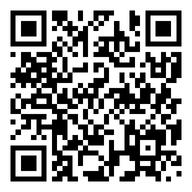
According to the U.S. Consumer Product Safety Commission, Lawnmowers cause more than 600 amputations in children each year.
Overview
Over 17,000 children are treated each year for lawnmower injuries in the U.S. 4,000 children require trips to the emergency room for their injury. 75 children die each year due to lawnmower injuries. Boys are injured more frequently than girls. Injuries are seen most often in young children (1-3 years) and teenagers.
Common Injuries
Lawnmowers can be dangerous in many ways. The energy of the rotating blade is more powerful than a 0.357 Magnum gun. The blade can send objects such as rocks or sticks toward the operator or other people in the yard. Young children can be injured if they trip near the mower, are struck or run over by the mower, or fall/jump from a riding mower when riding with the operator. Other injuries can happen from touching the hot surface of the mower, running over one’s foot or limb, or servicing the mower.
Lawnmowers are the leading cause of traumatic amputations (loss of all or part of a limb) in children. When these injuries happen, nearly 90% of children are injured in their own yard. Nearly 80% are injured by the usual user of the mower. About 50% happen while the mower is in reverse. These injuries often require a team of specialists to treat. They may need multiple surgeries over weeks to years.
Riding mowers have a much higher injury rate than walk-behind power mowers. Riding mower injuries are often more serious and require more intensive treatment.
Lawnmower injuries also have psychological effects. In one study, half of children who lost a limb from lawnmowers reported changed goals for the future. Because the parent is the usual operator, these injuries can create difficult emotional problems for the whole family.
How Can Lawnmower Injuries Be Prevented?
These injuries are preventable. The American Academy of Pediatrics (AAP) and the American Academy of Orthopaedic Surgeons (AAOS) have a number of recommended safety guidelines. These include:
- Children should never be in the yard when a lawnmower is in use. Teach children to avoid running lawnmowers
- Children should not operate lawnmowers.
- The AAOS recommends that children who are 15 and younger should be kept away from lawnmowers in use.
- The AAP recommends that children should be at least 12 to use a push lawnmower and at least 16 to operate a riding lawnmower
- No riders other than the operator should be allowed on a riding mower
- Children can easily fall off a riding mower and be injured
- Children who have been given a ride on a mower in the past, may run into the area unexpectedly and be run over by the mower
- Remove stones, toys and sticks from the yard before mowing
- Operators should wear sturdy shoes and protective eyewear
- Operators should not be under the influence of drugs or alcohol
- Mowers should not be pulled backward, and mowing in reverse should be avoided. If operating a riding mower in reverse, always look for children behind the mower
- Caution should be used when mowing hills and slopes. Do not cut wet grass.
- Push mowers should be used across slopes to avoid the mower rolling over your feet if you slip
- Riding mowers should be driven up and down slopes to avoid the mower tipping over
- Mowers should have a control that stops the blade from moving if the handle is released
- A running lawnmower should not be left unattended
- The motor must be turned off before checking, servicing or cleaning the mower
- If debris is caught in the mower, turn the motor off and use a stick or broom handle to remove the debris – not your hands or feet.
- Lawn mowers must be in good working order
Resources
Page QR Code:


 POSNA.org
POSNA.org

